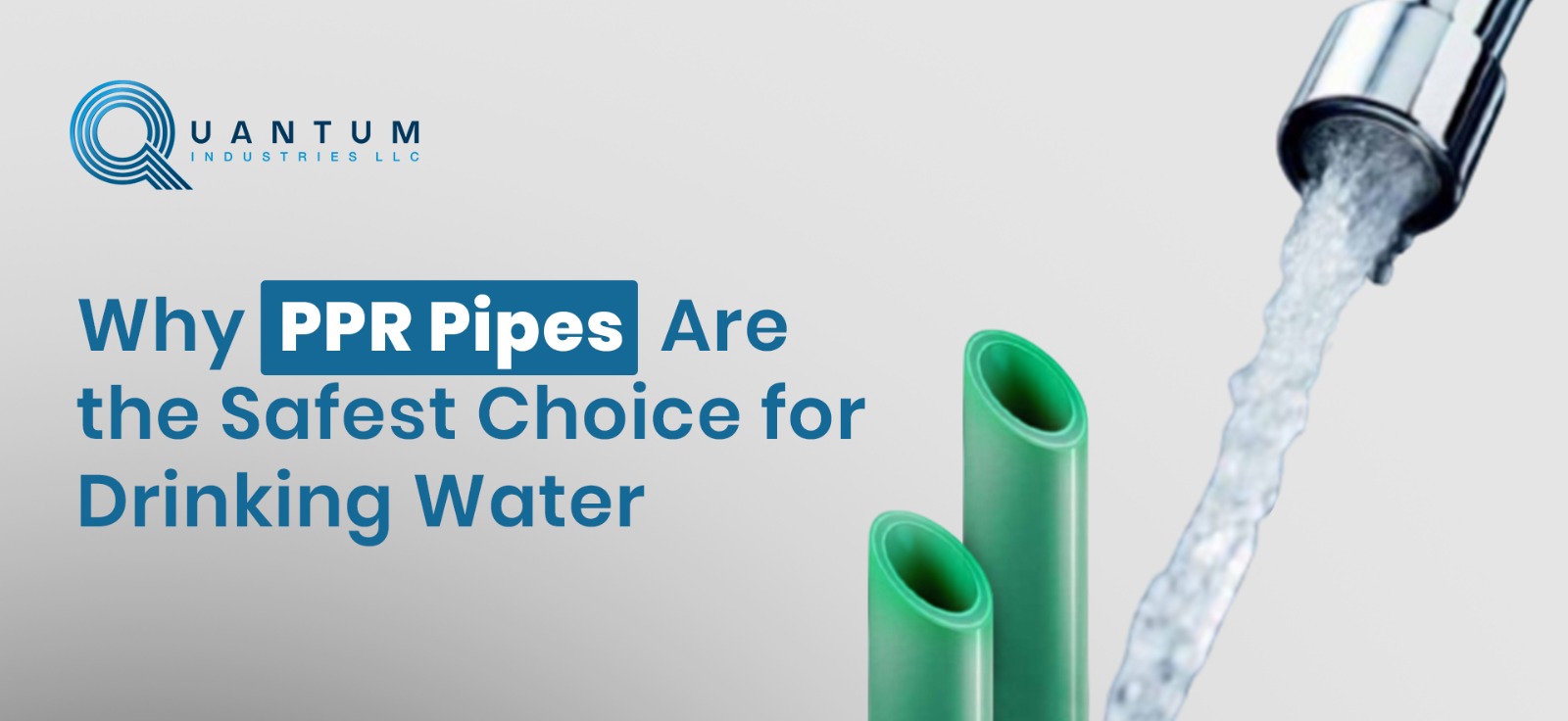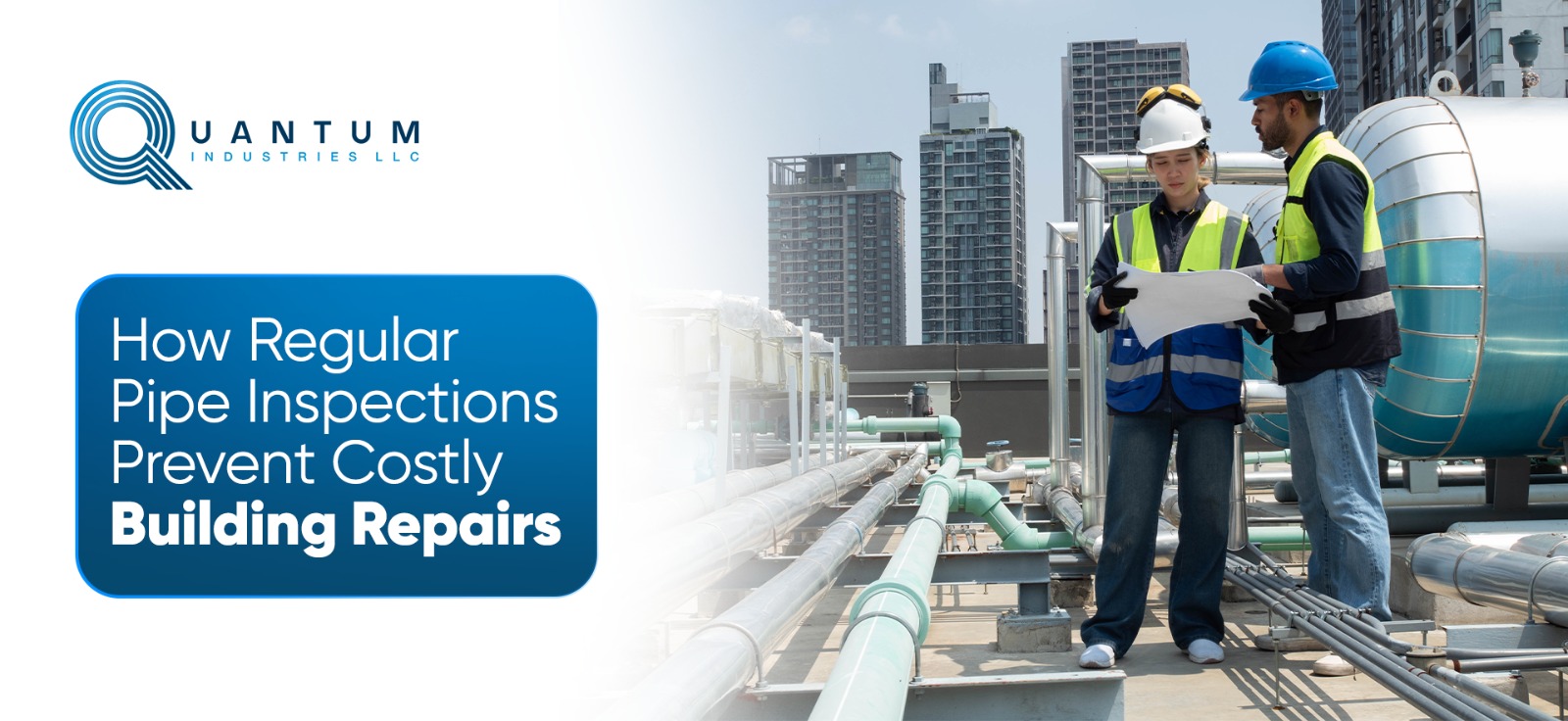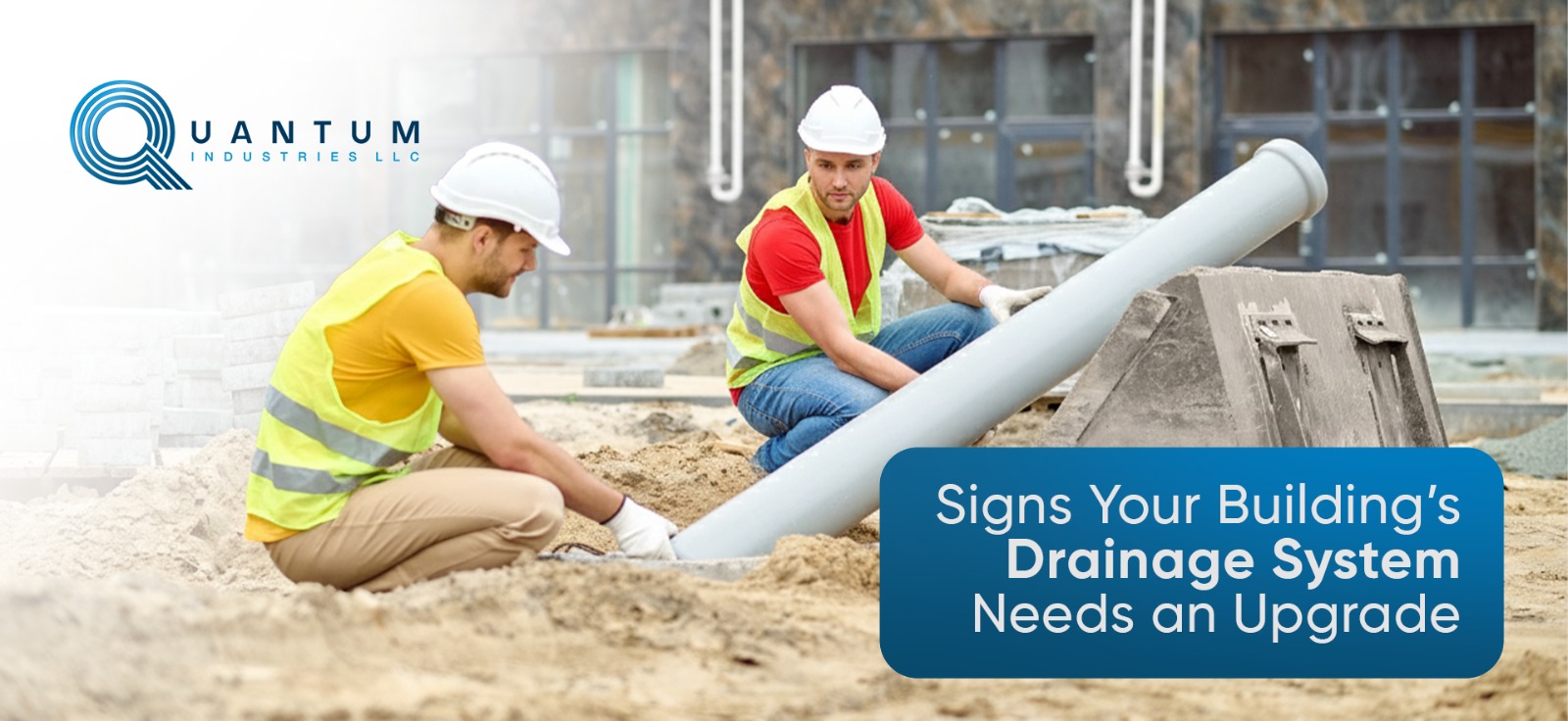



When it comes to drinking water, safety is the top concern. People want to make sure the water coming through their pipes is clean and free from harmful substances. That’s why the type of pipe used in plumbing systems is important. One type that stands out is the PPR pipe. In this blog Why PPR Pipes Are the Safest Choice for Drinking Water
We’ll take a closer look at PPR pipes and why they are considered the safest option for drinking water.
PPR stands for polypropylene random copolymer. It’s a type of plastic that is used to make piping systems for plumbing and other uses. Known for its lightweight feature, they also have a smooth inner surface that helps water flow easily.
PPR pipes are used in residential buildings, hospitals, schools, hotels, and even in industrial settings. They are most commonly used for hot and cold water systems.
When compared to metal pipes like copper or steel, PPR pipes do not rust. They also don’t carry the risk of chemical leaching like some PVC pipes. This makes them much safer for carrying drinking water.
PPR pipes have been used as water supply pipes for decades. As the safety of drinking water became a concern, so did the materials used to manufacture the pipe. PPR was an excellent choice because it was durable and nontoxic.
Over time, more countries became interested in PPR pipes, not just for drinking water pipes or pipes for water supply conduits, as laws and standards became more stringent. Governments and health departments also encouraged the use of PPR for water supply systems.
PPR is made from a type of plastic that has a simple chemical structure. It doesn’t contain any harmful substances such as lead or chlorine.
The pipes are manufactured using a process called extrusion. In this process, the raw material is melted, shaped into pipes, and cooled down. During production, each pipe goes through quality checks to make sure it is strong and free from defects. These checks help maintain a high standard for drinking water safety.
One of the biggest concerns with water pipes is chemical leaching. This happens when harmful substances from the pipe mix into the drinking water. Metal pipes can sometimes leach lead or other metals. PVC pipes may contain plasticizers that can also leak into the water.
They are chemically inert, meaning that they have no reactions to whatever is being transported, e.g., acids, alkalis, or other corrosive substances. This makes them a very safe choice for households and public water systems. Many PPR products are certified by international standards for use in drinking water.
Metal pipes are known to corrode. When that happens, rust and other particles can get into the water. PPR pipes, on the other hand, don’t rust. Their surface stays smooth and clean even after many years.
Because they don’t corrode, the risk of contaminants entering the water is also very much lower. Many case studies from schools and hospitals show that water systems using PPR pipes stayed clean and safe for much longer periods compared to systems using older materials.
Another benefit of PPR is its smooth interior. Bacteria have a hard time sticking to the inner walls of these pipes. This means there is less chance of biofilm forming inside the pipe.
Studies show that PPR pipes have one of the lowest bacterial growth rates among all common pipe materials. This is especially important in hospitals and homes with small children or elderly people.
PPR pipes are quite durable. They are able to handle high-pressure water systems and temperatures of 95°C. This makes them perfect for both cold and hot water systems. They also last a long time. The lifespan of PPR pipes often exceeds 30–50 years with minimal maintenance. In comparison, some other pipes may start to show issues after just 10 or 15 years.
Sunlight can damage some types of pipes, especially if they are used outdoors. PPR pipes are made to resist UV rays to some extent, though it's always better to protect any pipe from direct sunlight using insulation or covers.
This helps the pipe last longer and keeps the water inside safe from external heat and light.
PPR needs minimal maintenance. They don't clog and cause blockage easily. Besides, they don't need any periodic inspection for corrosion/rust, etc. Compared to copper or galvanized steel pipes, PPR is more affordable in the long run. The installation cost is also lower because the pipes are lightweight and easy to handle.
PPR pipes are recyclable. At the end of their life, they can be processed and reused to make new plastic products. This reduces waste and makes them more environmentally friendly than some other pipe types.
Many manufacturers also follow green production methods to make PPR pipes with less energy and fewer emissions.
Producing and installing PPR pipes takes less energy compared to metal pipes. Since, they are light, they are easier to transport and install. Less fuel is used in transport, and fewer workers are needed to install the pipes, which lowers the overall environmental impact.
PPR pipes are also known for their tight sealing feature. The joints are welded together using heat, giving them a leak-proof bond. This helps reduce water loss, which is a major problem in old plumbing systems.
Installing PPR pipes is simple. They are joined using a heat fusion process. This creates strong, leak-proof connections. The process is much quicker than welding metal pipes or using chemical adhesives on other plastic pipes.
Tools used for PPR pipe installation are also easy to use and not very expensive.
PPR pipes can be connected to other types of pipes using special fittings. For example, if your home already has copper pipes, you can still add PPR pipes without having to replace everything.
Plumbers often use adapters to safely join PPR with other materials. This makes upgrades and repairs easier.
As building standards improve, more homes and offices are switching to safer, cleaner plumbing systems. PPR pipes are already being used in green buildings and smart homes.
PPR pipes are already being used in green buildings and smart homes, and they perfectly go hand-in-hand with safety and environmental regulations. Besides, PPR is a very smart choice for the long term.
PPR pipes provide a clean, safe, and reliable method of transporting drinking water. They do not rust, do not leach harmful chemicals, and do not let bacteria reproduce easily. They are durable, inexpensive, and eco-friendly, and all the parts work well together. PPR pipes are easy to install, and it is easy to incorporate them into modern plumbing systems. For all these reasons, PPR pipes are the safest and smartest choice today.
Yes. PPR pipes can handle hot water up to 95°C, making them perfect for both cold and hot water systems.
PPR pipes can last 30 to 50 years with proper installation and care.
Yes. Small leaks or cracks can be repaired using heat fusion or by replacing the damaged section.
Installation is generally cheaper than metal piping. The material cost is lower, and the labor required is less.
PPR pipes do not rust or leach metals into the water. This makes them safer than copper, especially in areas with acidic water.

